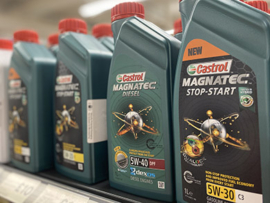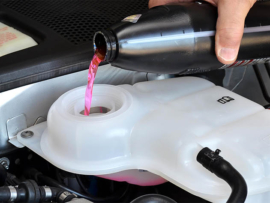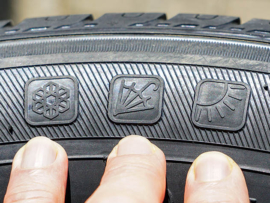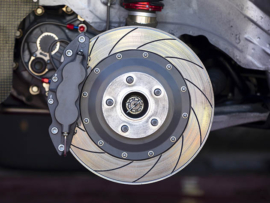Diagnostic Trouble Code (DTC) P0299 pertains to a potential issue with the turbocharger or a problem with the turbocharging or supercharging system. This code is triggered when the Engine Control Module (ECM) detects that the boost pressure in the intake manifold is lower than the expected range for a certain period of time. The boost pressure is the amount of compressed air that the turbocharging system forces into the engine’s cylinders, enhancing engine performance.
When DTC P0299 is present, this could result from factors such as a faulty wastegate, a leak in the boost pressure system, or a malfunctioning boost pressure sensor. As the higher pressure causes a better power output from the engine, insufficient boost pressure can lead to reduced engine power. Along with this, you may feel a decreased acceleration and poor overall performance. The turbocharger is going to be worn rarely, but it’s essential to examine this issue promptly. If you don’t, the potential outcomes can lead to potential engine damage and nonoptimal engine operating.
Fixes for OBD-II Code P0299
Here are some steps, to help troubleshoot and possibly resolve this code:
- Documented Perusal. Before diving in, check the vehicle’s service history to determine if any recent repairs or modifications might be related to the issue.
- Initial Check-up. Visually inspect all turbo/supercharger hoses, pipes, and connections for damage, disconnections, or leaks. Sometimes a simple hose that’s off its connection can cause this issue.
- Connection Reconnaissance. Ensure the wastegate or bypass valve operates smoothly and isn’t sticking. The wastegate is responsible for controlling the boost levels. If it’s malfunctioning, it could lead to underboost conditions.
- Boost Sensor Vigilance. Examine the turbo/supercharger boost sensor. Check its connection and the sensor itself. If the sensor is giving faulty readings, it may cause an underboost condition.
- Exhaust Expedition. Inspect the exhaust system before the turbocharger for blockages. Any restrictions could limit the exhaust gases reaching the turbo, leading to reduced boost.
- Pneumatic Patrol. Using a vacuum pump, test the wastegate control solenoid to ensure it’s operating correctly. A malfunctioning solenoid may not control the wastegate properly, causing inconsistent boost levels.
- Electrical Expedition. Check all relevant electrical connections, including wiring and connectors, related to the turbocharging system for damage or corrosion.
- Oil Optimism. Ensure the turbocharger’s oil feed is clear and the turbocharger itself is receiving adequate lubrication. A lack of oil can lead to turbocharger failure, resulting in reduced or no boost.
- Boost Pressure Test. Conduct a boost pressure test to check for potential leaks in the system. Using a boost leak tester can help identify areas where boost might be escaping.
- Professional Consultation. Engage if the issue persists or if you’re unsure about the specific mechanics, consider seeking a professional mechanic or specialist familiar with turbocharged systems. They might have tools or expertise to diagnose deeper issues, like internal turbocharger damage.
Note: always work safely, and if you’re not comfortable with any procedure, it’s wise to consult or hire a professional.
Related DTCs to P0299
There are other DTCs related to the turbocharging or supercharging systems that can be found in vehicles equipped with these forced induction systems: P0045, P0046, P0047, P004A, P004B, P004C, P004E, P004F, P005E, P005F, P006E, P0235, P0236, P0237, P0239, P0240, P0241, P0298, P0297, P02A0, P02A1, P02A2, P02A3, P02A4, P02A5, P02A6 – P02AF, P02B0 – P02B9.
It is worth to say that the exact list and definitions of OBD-II codes can vary somewhat based on the vehicle manufacturer and model year. Consult the vehicle’s service manual or a trusted database to confirm the meaning and troubleshooting steps for a specific code.
FAQs
How much does it cost to fix the code P0299?
Fixing a DTC P0299 error can vary greatly in cost depending on the specific cause of the code and the make, model, and year of your vehicle. Here’s a broad breakdown:
- Vacuum Lines or Hoses. If the problem is due to a leak in the vacuum lines or hoses leading to the turbo or wastegate, the cost might be relatively low. The parts themselves are not typically expensive ($10-$50), and the labor can range from $50-$150 depending on the labor rates and the complexity of the repair.
- Boost Sensor Replacement. If the issue is a faulty boost sensor, a replacement can cost between $40-$200 for the part, and labor might be another $50-$150.
- Wastegate or Bypass Valve. A malfunctioning wastegate or bypass valve might need to be replaced. These can vary in cost from $100 to $600 or more based on the make and model. Labor can add another $100-$300.
- Turbocharger Replacement. In the worst-case scenario, where the turbocharger itself is damaged and needs to be replaced, costs can escalate. A new turbocharger can range from $500 to $3,000 or more. Labor for a turbocharger replacement can be between $200 to $1,000 or more, depending on the vehicle and the complexity of the repair.
- Diagnostics. Don’t forget the cost of diagnostics. Many shops will charge an hour of labor to diagnose the issue, which can be anywhere from $50 to $150 or more depending on regional labor rates.
Considering the potential causes, a minor fix could be as low as $60-$100, while a major repair involving turbocharger replacement could push the cost well over $3,000.
Can I continue driving with the P0299 code?
Driving is allowed with the OBD-II code P0299, but it’s important to proceed with caution. While you may still be able to drive the vehicle, it’s better to address the issue as soon as possible to avoid potential damage to the engine and to ensure optimal performance.
How is the code P0299 serious?
The OBD-II code P0299 indicates an underboost condition in the turbocharger or supercharger system and considered moderately serious. It might not result in an immediate breakdown or complete engine failure, but it can significantly impact your vehicle’s performance. Continuing to drive with the P0299 code could also put additional stress on the engine. The engine management system might go into a “limp mode,” limiting power to prevent further damage. This protects the engine, but it can be frustrating and potentially hazardous when driving in traffic.
We do an efforts to find, research and recommend the best products. So, we may receive commissions from purchases that you make after following the links in our product reviews.








Leave A Comment